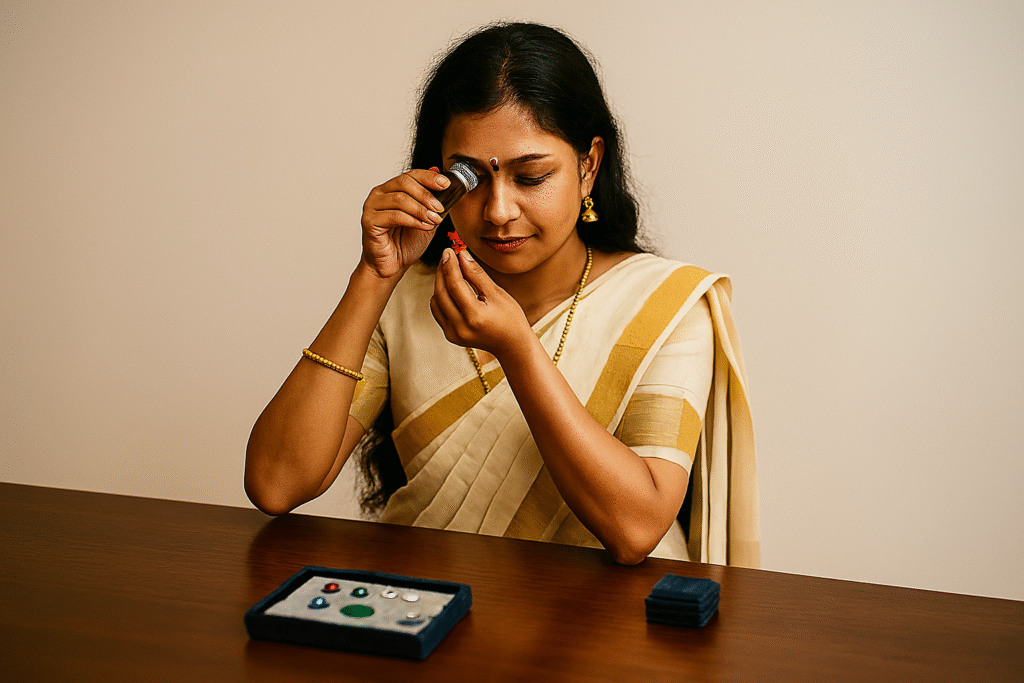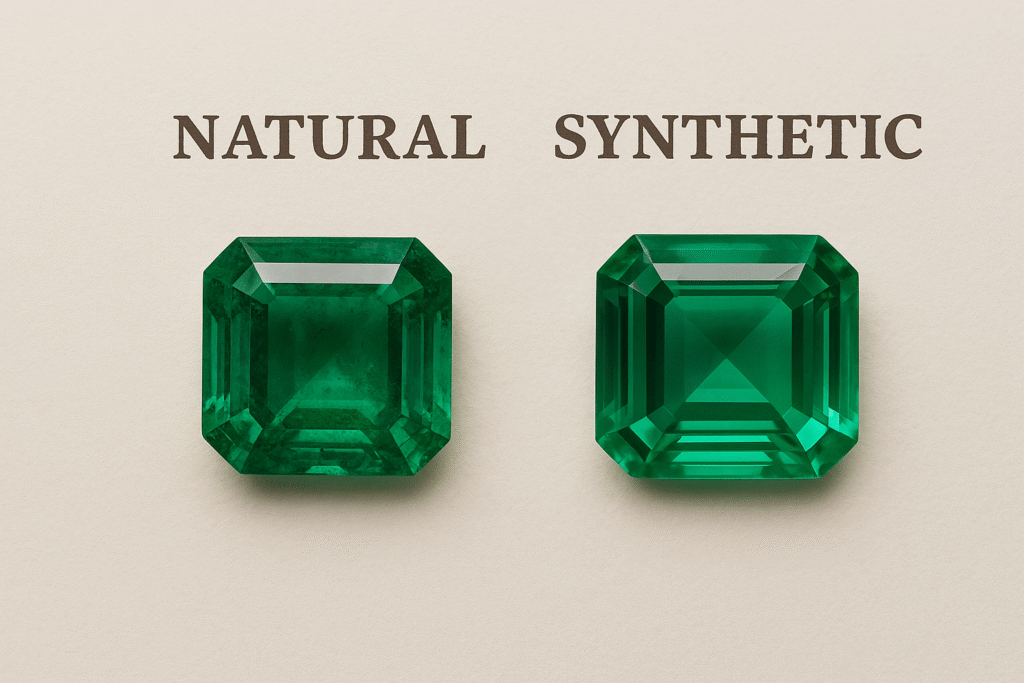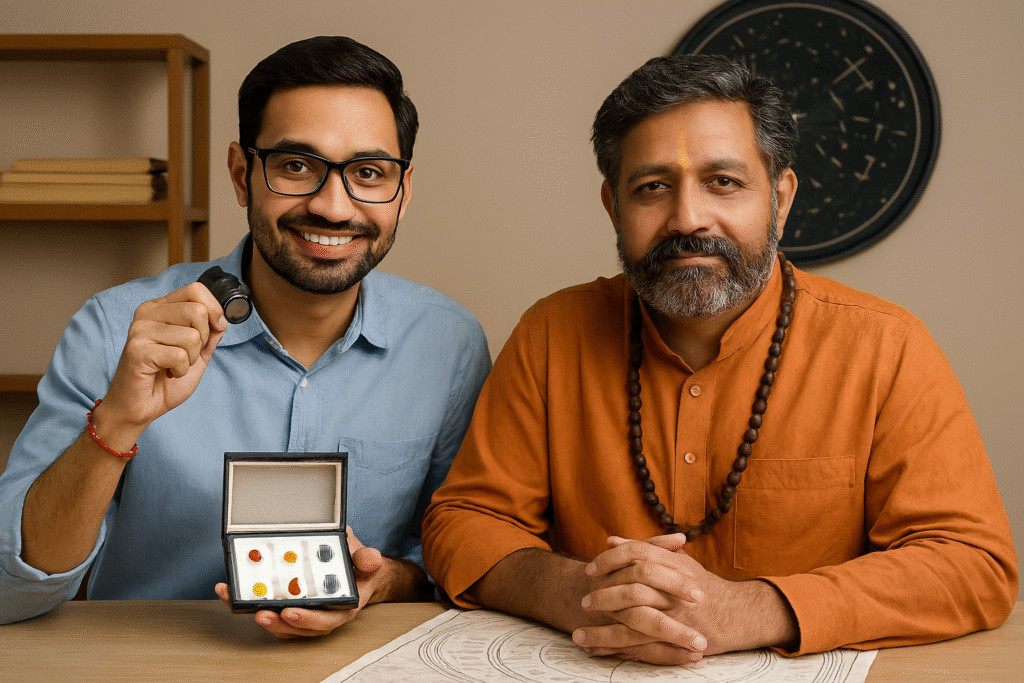Introduction
Wishful thinking in gem identification is one of the most dangerous traps in gemology. When you want a stone to be valuable, confirmation bias can blind you to evidence that proves otherwise. This guide explains how to avoid the costly mistakes that come from desire overriding discipline.
Is Wishful Thinking the Most Dangerous Trap in Gem Identification?
What You’ll Learn
- What wishful thinking means in gem identification
- How confirmation bias in gemology leads to mistakes
- Real-world examples of gem identification errors
- Practical steps to avoid bias when buying or testing gems
The Psychology Behind the Trap
Wishful thinking in gem identification happens when someone wants a stone to be valuable and ignores contradictory facts. In psychology, this is called confirmation bias. A green stone may be accepted as emerald, even if inclusions suggest it is glass.
Costly Real-World Examples
- A ruby worth $250,000 at auction turned out to be synthetic. The buyer admitted his wishful thinking stopped him from requesting lab verification.
- In Bangkok, a dealer spent $40,000 on “emeralds” that testing later proved were dyed quartz.
These cases show why gem buyers must resist bias.
How to Avoid Wishful Thinking in Gem Identification
- Use multiple tests (refractometer, spectroscopy, fluorescence).
- Always request a gemological lab certificate before major purchases.
- Ask yourself: “Am I ignoring evidence because of wishful thinking?”
. To understand similar risks in precious metals, see 24K, 22K, 18K: What Every Malayali Gold Buyer Must Know.
Expert Insight
After four decades in gemology, I’ve learned that discipline protects you more than equipment. The key is: evidence must always outweigh emotion.
For related reading, check Understanding BIS Hallmark: What It Means for Your Jewellery and How to Sell Gold in Kerala Without Losing Value.
Learn More:
- Psychology reference on confirmation bias.
- GIA (Gemological Institute of America) about gem identification reports.
Introduction
This comprehensive Watch Buying Guide answers the most common questions about timepieces.
Whether you’re purchasing your first watch or adding to your collection, these expert insights help you make informed decisions.
From understanding movement types to choosing the right size for your wrist, you’ll find everything needed before making a purchase.
What Types of Watches Should You Consider? – Watch Buying Guide Insights
Understanding the five main categories helps narrow your options:
- Mechanical watches – Use springs and gears. No battery needed.
- Quartz watches – Battery-powered; most accurate.
- Automatic watches – Wind themselves from wrist movement.
- Digital watches – Display time numerically on a screen.
- Smartwatches – Connect to your phone and track fitness data.
Accuracy Expectations – Watch Buying Guide Tips
- Quartz watches – Lose about 15 seconds per month.
- Mechanical watches – Lose 20–40 seconds per day.
- Atomic watches – Lose 1 second every 100 million years.
- Your phone’s clock stays perfectly accurate.
Water Resistance Considerations
Water resistance ratings affect usage scenarios:
- 30m – Handles rain and handwashing
- 50m – Safe for swimming
- 100m – Suitable for snorkeling
- 200m+ – Scuba diving
Replace gaskets every 2–3 years to maintain resistance.
Maintenance Schedule – Watch Buying Guide Advice
- Quartz watches – Battery replacement every 1–3 years.
- Mechanical watches – Full service every 3–5 years.
- Service costs: $200–800 depending on the brand.
Watch for stopping, running fast/slow, or condensation under the crystal.
Pricing Strategy
- Budget watches – Plastic cases, basic movements
- Mid-range watches – Steel cases, reliable mechanisms
- Luxury watches – Precious metals, hand-finished details
Remember: craftsmanship, materials, and brand prestige drive prices.
Sizing Advice
- 6–7 inch wrists – 38–42mm
- 7–8 inch wrists – 40–44mm
- 8+ inch wrists – 42–46mm
Ensure lugs don’t overhang wrist edges.
Complications to Prioritize
- Date display – Useful daily
- GMT hand – Second time zone
- Chronograph – Stopwatch
- Moon phase – Decorative
- Annual calendar – Adjusts month lengths
More complications = more things that can break.
Maintenance Tips
- Clean with a soft cloth
- Avoid extreme temperatures & magnets
- Wind manual watches daily
- Use watch winders for automatics
- Don’t adjust date between 9 PM–3 AM
Investment Potential
- Most watches lose value after purchase
- Only select Rolex, Patek Philippe, Audemars Piguet models appreciate
- Vintage watches from 1960s–70s show strong growth
- Buy watches you enjoy wearing, not solely for investment
Essential Tools
- Spring bar tool
- Case back opener
- Soft polishing cloth
- Watch cushion
- Demagnetizer
Where to Purchase
- Online – Better selection, often cheaper
- Physical stores – Try before buying
- Authorized dealers – Full warranties
- Grey market – Discounts, limited warranty
- Forums/eBay – Vintage pieces, verify authenticity
Learn More:
- 【Professional Design】This refractometer is specially designed to measure the refractive index of gemstones and solid mat…
- 【High Quality】Quality all metal construction, low battery consumption can be used for a long time.Approved by strict qua…
- 【Package Contents】Built-in LED flashlight, 30x jewelers loupe in silver housing, one of the most important gemstone iden…




